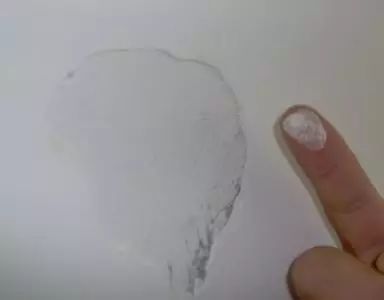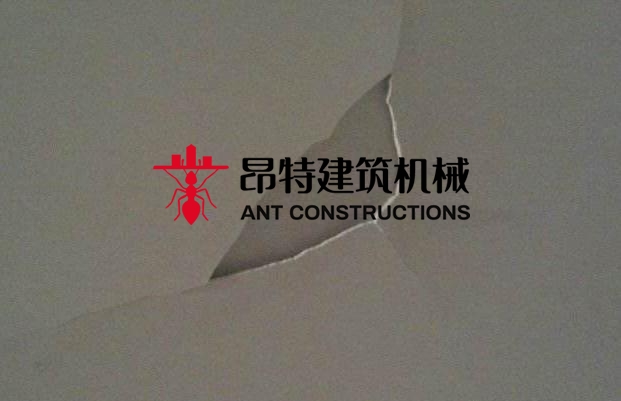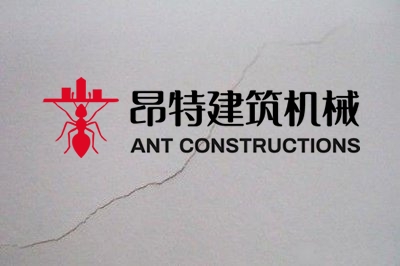Wall putty common problems-reason analysis-solution
Author:ANT CONSTRUCTIONS Comefrom: Createdate:2020/11/18 14:31:04 Hits:1395
Wall putty common problems-reason analysis-solution

Common problems and solutions during the construction of wall putty
Wall Putty as a common decorative material has more and more applications. However, there are a series of problems if you do not pay attention to some details during the construction process of wall putty. Now we are focusing on the common problems and solutions during the construction of wall putty and share with our customers as follows.
Clean up the construction environment, tidy up the obstacles (furniture, decorations) that affect the construction on site, and pay attention to on-site protection.
Mix the dry powder wall putty and water according to 1:0.3 or 1:0.5, mix well with a special mixer, then let it stand for 5~10 minutes, continue to mix evenly, then you can scrape the wall putty on the wall.
Wall putty scraping can be divided into two steps. If you have special requirements, you can choose the base material and face material to scrape separately. Internal wall putty and external wall putty are different due to different construction environment and requirements.
Post-processing of face layer materials, after the interior wall putty surface layer is finished, it is not necessary to apply paint, but can be directly polished. The specific construction method is to polish the surface layer in time after first layer of a small area (2~3 square meters). After finish the internal and external wall firstly layers, if you apply latex paint, the surface should be polished after the surface is hardened 8 hours. After the polishing is completed, the surface dust should be removed in time, and the maintenance should be done. Generally, use clean water and spray 2 ~3 times.
Wall Putty hollow problem,
Phenomenon:
bubbles are generated during the construction process and after a period of time, the surface of the putty bubbles.

Reasons:
The base is too rough and the scraping speed is too fast;
The putty layer is too thick in one application, greater than 2.0mm;
The moisture content of the base layer is too high, and the density is too large or too small. Because wall contains abundant voids and the putty has a high moisture content, it is not breathable, and the air is enclosed in the void cavity which is not easy to eliminate.
After a period of construction, bursts and blisters appear on the surface, mainly caused by uneven mixing. The slurry contains powdery particles that not dissolved, after construction, a large amount of water is absorbed and swells to form bursts.
Solution:
If a large area of bubbling putty surface appears, use a spatula to directly break the small bubbling area and then use a suitable putty to scrape the bubbled surface layer.
Wall Putty is generally stirred evenly, then let it stand for about 10 minutes, then use an electric mixer to stir again and scrape it on the wall.
When the second or last surface layer is blistered, it is necessary to use a spatula to remove bubbles before removing the watermark to ensure that no bubbles appear on the putty surface.
For particularly rough walls, generally choose coarse putty as the base material.
In the environment where the wall is too dry or the wind is strong and the light is strong, first wetting the wall with clean water as much as possible, after the wall without water marks, scrape the putty layer.
Falling off of the wall putty
Phenomenon:
After the wall putty is completed and dry, the wall putty powder fall off when touched by hand.

Reasons:
Interior wall, The polishing time of interior wall putty powder is not well controlled. After the surface is dry, the powder will be falled after polishing;
Exterior wall putty powder, the face coating is thin, in the high temperature in summer, the water volatilizes quickly, and the surface layer cannot be cured with enough water, so it is easy to fall off.
The product has exceeded the shelf life and lost the bonding strength significantly.
The product was stored improperly, and the adhesive force drops significantly after absorbing moisture.
The high water absorption rate of the base layer causes the putty to dry very quickly without sufficient moisture for curing.
Solution:
When polishing the inner wall putty surface layer, it is necessary to control the appropriate polishing time. The best time for polishing is to polish immediately after the watermark dispeared on the surface of the putty. Practice has proved that after finish 1~2m2 should be flattened or polished.
After the exterior wall putty surface is dry, it should be properly sanded and water-sprinkled. The general maintenance is normally need two or more times. If necessary, please mix with the transparent sealing primer (1 : 5) as the second spray, the effect will be better.
The product must be used within the warranty period. If it exceeds the warranty period, a trial scraping must be carried out, if it is qualified, the construction can be carried out;
Must pay attention to waterproof treatment of the wall putty powder, and it should be stored in a cool and dry place, and ensure that the wall putty package no damage.
In summer or under high temperature and strong wind, it is best to wet the wall with clean water before applying putty. Putty can be applied after the surface of the wall has no water.
Fnished Wall Putty fall off
Phenomenon:
It refers to the poor bonding strength between the wall putty and the base layer which directly falls off from the base layer.

Reasons:
The old wall is very smooth (such as tempered putty, polyurethane and other oily paint), the wall putty has poor adhesion to the surface.
The new wall is poured with a template, the surface is smooth and contains a large amount of release agent (waste engine oil or silicone).
For wooden substrates, metal substrates and other non-mortar substrates (such as plywood, five-plywood, particleboard, solid wood, etc.), wall putty is directly applied. Due to the different surface expansion and contraction ratios, the water absorption rate of this ind sunstrate is relatively strong and rigid, The hard wall putty cannot be deformed accordingly, and it will usually fall off after 3 months.
Wall Putty Powder has exceeded the shelf life and the bonding strength is reduced.
Solution:
Remove the peeling layer and process it according to the following conditions;
Polish the old wall to increase the surface roughness, and then use the interface agent (10% environmental protection glue or special interface agent );
Remove the mold release agent or other grease components on the surface with a degreasing cleaning agent, and then apply scraping putty.
Use two-component or special plywood wall putty for construction.
For exterior wall surfaces such as marble, mosaic, ceramic tile, etc., please use base primer SB0660 exterior wall tilling putty for primer.
Use it within the putty shelf life.
Phenomenon:
The two layers of wall putty or the wall putty and the substrate peel off.

Reasons:
The base layer contains a large amount of release agent (such as waste engine oil, wax emulsion);
The base is severely chalked and the water absorption is too large.
The bottom putty is severely powdered and the bottom putty is too hard, drying too fast will cause it fall off.
The working time interval between the two layers wall putty is too long, generally more than 15 days, the finishing layer may sometimes cause delamination.
After construction or during construction of wall putty, the putty layer is infiltrated by rain or other penetrating water causing the loss of the effective components of the putty and make wall putty falling off.
The combination of two layers wall putty is unreasonable.
Solutions:
Remove the peeling layer and re-select the special wall putty to scrape again;
For severely chalked construction surfaces, it is better to seal them with 10% base Primer diluent, after drying, apply the corresponding wall putty layer or other construction
Especially interior wall putty, shorten the interval time between two layers wall putty constructions as much as possible;
Pay attention to the protection during the construction process. During the construction of the wall putty or within 8 hours after the construction, the putty should not be infiltrated by water;
When choosing putty, it is better to consult the proffessional wall putty supplier, they will give you professional guidance.
Phenomenon:
The surface of the wall putty cracked after a period of time.

Reasons:
The substrate layer is not completely dry before construction. It is critical that the moisture content of the substrate layer is ≤ 10%.
The base wall putty layer is not completely dried and did the face layer wall putty, the face layer wall putty is dried first, and the base layer wall putty is still in the drying process, this resulted in different shrinkage between the layers and easy to crack.
When processing the substrate, if the seam-filling and flattening materials are not completely dry, the internal wall putty with strong hardness is applied on it, this is easy to cause cracking;
Too thick of the wall putty, the base layer wall putty drying slow but the surface layer wall putty drying faster, this is easy to cause cracking.
Solution:
Remove the cracked wall putty. If the crack is not too big, flexible wall putty can be used for the first construction, and then the construction shall be carried out according to the standard construction method.
Each wall putty layer should not be too thick. The time interval between the two wall putty layers must be more than 4 hours. After the first layer putty is completely dried, the second scraping should be carried out.
Putty powder getting yellow
Phenomenon:
partial or all the wall putty appears yellow soon after the wall putty construction is completed.
Reasons:
Mainly occurs in the old indoor walls. The old wall putty used a lot of PVA glue. The glue is aged and decomposed to produce unsaturated acid. The unsaturated acid reacts with calcium ions in the wall putty to produce corresponding yellow calcium salt.
Solution:
Roll coating twice with environmentally friendly glue, and after it is completely dry, apply environment friendly water-based interior wall putty;
Roll on two coats with White Sealing Primer. After it is completely dry, scrape the putty.
Use paste putty for construction or use board putty for construction.
In short, pay more attention to the details during the construction of the wall putty can completely avoid these common problems. Professional wall putty producion equipment manufacturer- Henan Ant Construction experts remind you please use good quality putty powder produced by a professional putty powder manufacturer to ensure the quality of construction.
Ant Construction provides the best possible drymix technology for dry mix and dry mortar manufacturers.
Get shorter payback for your investment – more profit with Ant Construction Machinery Co., Ltd
Ant Construction Machinery highly focus on service in order to provide a comprehensive solution to customers including before-sales service and after-sales service. 7*24 after-sales service is available to all our clients. All our after-sales service representatives are well trained with strict system to ensure top quality service, especially for international clients. We always care about your mixer running and after-sales service is always at your side to ensure everything runs perfectly with guaranteed quality and performance.












